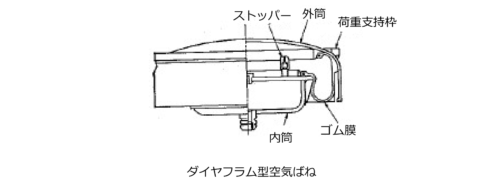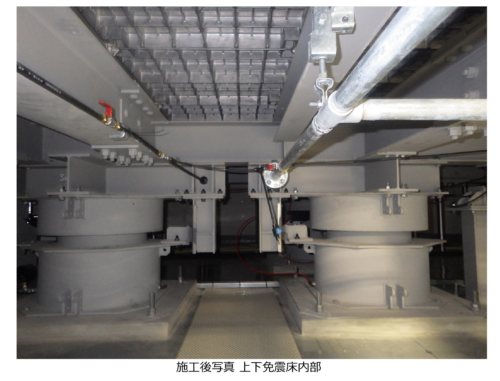Example of seismic isolation measures for JMA supercomputer system

The supercomputer system of the Japan Meteorological Agency must continue to operate even in the event of a disaster. Yacmo's upper and lower seismic isolation floors are used in the server room to prepare for a direct earthquake.
issue
The Japan Meteorological Agency's Meteorological Satellite Center processes the vast amount of observation data sent from the geostationary meteorological satellite Himawari on a 24-hour basis. This data is used for weather forecasting, disaster prevention weather information, and monitoring of climate change, etc. The center must continue to operate even in the event of a disaster such as a massive earthquake. Therefore, an advanced seismic isolation mechanism was required. The building containing the server room where the main supercomputer system is installed has a horizontal (two-dimensional) seismic isolation structure that can maintain building functions even in the event of a seismic intensity of 6 or higher. The server room in the building has been designed to withstand an earthquake of an epicenter-type.
Yacmo proceeded with plans for the server room to be constructed with upper and lower seismic isolation floor structures, based on its experience with upper and lower seismic isolation mechanisms at the Edo-Tokyo Museum and other facilities. In designing this structure, it was necessary to achieve both high performance to protect the supercomputer system from an earthquake directly below and reliability in long-term operation. In addition, the load capacity of the seismic isolation floor needed to be considered because of its high load capacity (8t x 6 units) compared to normal data servers. The requirements are summarized below.
- Natural frequency 1Hz to 1.2Hz
- Required stroke ±40mm
- No change in performance due to change in load capacity
- Response acceleration of 300gal or less for notified seismic waves
- Backup function for ancillary equipment
- Load capacity 10000N/m2
In particular, a diaphragm-type air spring seismic isolation bearing, jointly developed with an air spring manufacturer, was adopted to meet conditions 1 through 3 above.

counter-measure
The diaphragm type air spring can reduce the height of the air spring itself even with a large stroke, and has rigidity in the lateral direction. The seismic isolation bearing developed in this project is equipped with an integrated tank to provide damping force and an automatic height adjustment mechanism to save labor during normal operation. In addition, two compressed air compressors are alternately operated per seismic isolation floor system to extend the service life of the system and to provide a backup system in case of failure.

result
After the seismic isolation floor is completed, it can be used for the same period of time as the building by performing appropriate maintenance. Therefore, initial costs are not wasted and environmental impact is reduced.

